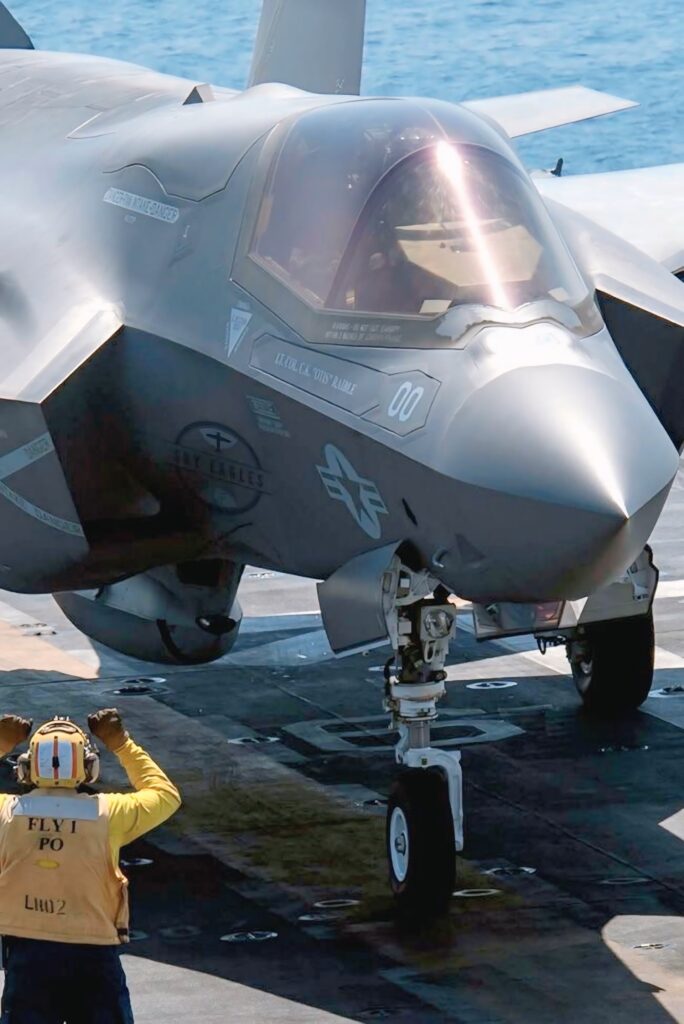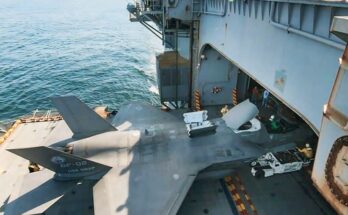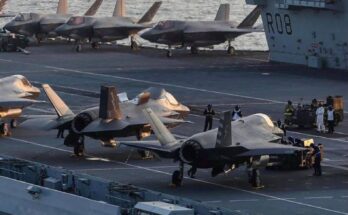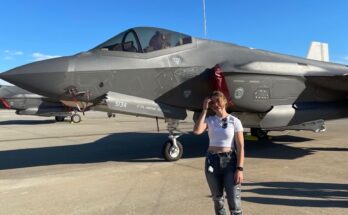
The F-35B Lightning II is one of the most advanced multirole fighter jets ever built, designed to give modern militaries unmatched flexibility in both air and sea operations. It is part of the F-35 family, which includes the F-35A for conventional runways and the F-35C for aircraft carriers. What makes the F-35B stand out is its short takeoff and vertical landing (STOVL) capability, allowing it to operate from smaller ships, amphibious assault vessels, or forward bases with limited runways. This feature gives commanders options that no other stealth aircraft currently provides.
Developed by Lockheed Martin as part of the Joint Strike Fighter program, the F-35B was created with input from several allied nations. It entered service with the U.S. Marine Corps in 2015, making the Marines the first branch to deploy it operationally. Since then, it has been adopted by the United Kingdom’s Royal Navy and Royal Air Force, Italy, and Japan, with more partners expected in the future. Its versatility makes it especially attractive to nations that rely on smaller carriers rather than the massive supercarriers fielded by the United States.
At the heart of the F-35B’s unique design is the Pratt & Whitney F135 engine paired with a Rolls-Royce lift fan system. This engineering marvel allows the aircraft to transition smoothly from forward flight to hovering, similar to the famous Harrier jump jet but with far greater efficiency, stealth, and power. The lift fan provides vertical thrust, while the engine’s nozzle swivels downward to stabilize the aircraft. This system is complicated and expensive but enables missions that no other fifth-generation jet can perform.
Stealth is another critical aspect of the F-35B. Its sleek profile, radar-absorbent materials, and internal weapons bays make it difficult to detect by enemy radar. Unlike earlier STOVL jets, which sacrificed performance for vertical landing ability, the F-35B is a true stealth fighter capable of air-to-air combat, precision strike missions, and intelligence gathering. Its sensors provide pilots with unmatched situational awareness, linking data from multiple sources and even sharing it with other aircraft and ships in real time.
The cockpit reflects the shift toward advanced avionics. Pilots rely on a helmet-mounted display system that projects flight data directly onto their visor, removing the need for traditional instruments. This helmet also allows pilots to “see through” the jet using cameras placed around the airframe, giving a complete 360-degree view. These systems reduce workload, improve decision-making speed, and provide an advantage in high-pressure combat environments.
Despite its advantages, the F-35B has faced criticism. Its development was expensive, with costs running into the hundreds of billions across the entire F-35 program. Maintenance and sustainment are also demanding, and the STOVL system adds complexity compared to the simpler F-35A. Still, most experts agree that its combination of stealth, versatility, and networked combat capability makes it indispensable for modern militaries.
In the years ahead, the F-35B will continue to shape naval aviation. Its ability to launch from small carriers allows nations without supercarriers to field a true fifth-generation strike fighter, altering the balance of power at sea. For the U.S. Marine Corps, it ensures that expeditionary forces can operate with advanced air support from virtually anywhere in the world. The F-35B is more than a fighter jet; it is a symbol of how air power has adapted to modern needs.


